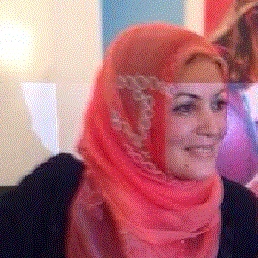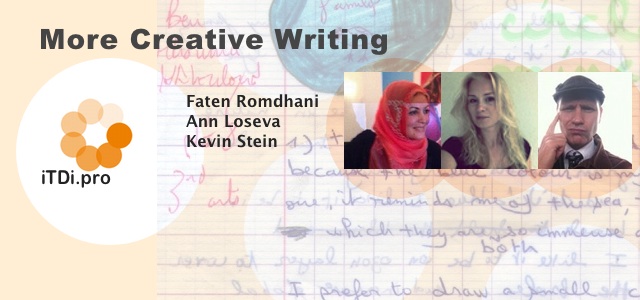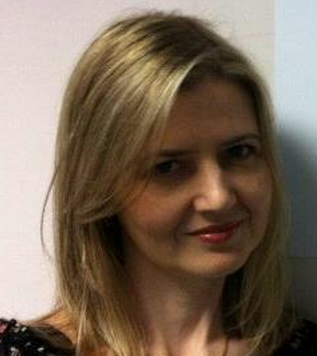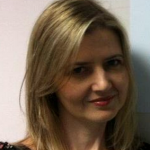Sorry guys, Creative Writing is a Charming Woman
– Faten Romdhani

Creativity has always kept my mind busy and my heart engaged. It seems to me that creativity is a wild issue and no one can tame it. If creativity were a woman, I would have called her the mysterious woman with the smiling face, the tempting nature, the bright future and the unfathomable depth. Even the most mesmerizing looks could not bewitch her in any way. Creative Writing, or CW as I rename it, is The Charming Woman.
Sorry guys!
She escapes the strict rules of society and of teaching and is delighted with the inspiration she awakens in the poets’ and/or writers’ minds and hearts. She is a charming woman, a siren-like being, exalting in music and nature and luring the sailors with the most penetrative music, poems, stories and helping them in the journey of self-discovery.
She is soulful woman with a deep, untamed nature, she hooks teachers and keeps them awake all night to get some sort of inspiration. Inspirational ideas how to teach, how to start in an uncommon way, how to engage learners emotionally and make them feel the lesson to the extent that they enthusiastically get inspired themselves and start writing creatively. If the teacher is not creative, then creativity could not step into the classroom. It will always stroll outside, in the green fields, in the wild, boundless nature. Creativity is a guest the teacher and the learners invite in – provided that the teacher sets the appropriate scene.
How can teachers inspire if they do not model inspiration? How can learners be creative writers if teachers do not allow learners to think and write creatively? And what if the teachers do not have any predilection for creative writing? It’s desperate to see that some teachers have lost all flavor for creativity and think that’s none of their business to give vent to the students’ imagination.
One of the many reasons that keep teachers reluctant to invite creative writing to their classrooms is that CW is still a taboo in many course books. Creative writing needs a lot of patience and is also time-consuming for many teachers, yet is so very rewarding for the many who are conscious (conscious of the various advantages of CW) and adventurous (adventurous enough to be willing to risk and do not mind feeling human,and weak in front of their students) and creative (a label that cannot be allotted to any teacher unless they toss away the dull, gloomy activities in the textbooks and opt for a more fun, engaging way they think is closer to giving learners some space and time to think and write creatively. Most of the students, if not all of them, are creative, but if we keep teaching them monotonously, creativity would quit them forever.
Creative writing helps teachers build a nice bridge with their learners. Personally, I think the more creative the teacher is, the closer the learners would be to their teacher’s heart and mind. How to teach creative writing and how to instill creativity in the students is demanding, but is so rewarding. The teacher knows, by then, his/ her students like the palm of his/her own hands. Creative writing engages learners and helps them gain a lot of confidence, on the condition that the teacher encourages them to write on a regular basis.
Creative writing should not be confined to a limited time. It should be planned as part and parcel of every lesson. Time should never be a hindrance. If the students are so engaged in writing they will always find time to write creatively and puzzle everyone.
One of the experiences that conjures to my mind is that learners never believe they are poets unless they start writing their poems and feel they can themselves aspire and inspire. Many of my learners dazzled me to the point that I burst into tears of joy. This happens at that moment when you feel that your students have such an amazing creativity that it leaves you in such a wondrous state. You – and even them – never imagined they could write creatively.
One step towards creativity would help students attain more self-confidence, feel the joy of learning and start a self-discovery journey. I still remember those faces the learners have when I ask them to write poems (free poems or acrostic poems) or stories. They always start by some sarcastic comments: “we are no poets! We barely speak! We barely write! We have no time!” Most of the time, those who deny their talents are the ones who keep sending me their poems – even after they leave school for university. One pupil( Omar) is still sending me some of his lovely poems though he is studying medicine now. I want to share this last untitled poem he sent to me.
“should I run ?! should I stay ?!
should I let go , watch it fade away ?!
should I stand up and fight ?!
should I break down and drown ?!
I’m taking my way to the unknown,
through the night I’m walking all alone,
just me and a sad lonely moon,
and a little cold wind blowing from the wood.
should I leave it all behind ?!
should I slow down and make up my mind ?!
through all these thoughts,
I’m going blind,
there is one way out I’ll have to find. “
I hope you liked the poem. If so, please do not hesitate to visit my class blog of poems and write some encouraging comments to my students. I started this blog long ago with my students and I publish their poems as a form of recognition. It’s true I’ve been neglecting it for a while after being submerged with work, but this is no excuse and I am convinced I should carry on publishing their poems in the blog. The idea of the blog is not mine. I was inspired by my colleagues Mr. and Mrs. Hadji whose ICT Trainer Class Blog is an inspiration. Keeping an electronic platform for their creative pieces of writing will be of enormous importance to them and to us as teachers of different generations.
To end up my post, I would like to share this creative writing activity I implemented with my students. Here are the steps: I asked them to draw a circle, colour, describe it, and tell who would be with them in the circle. What are their feelings? Where would they like their circle to be?
The learners sit the way they like while listening to some soft music. Those moments are unforgettable for me because I felt an immense joy seeing them engage in writing about themselves, their inner thoughts, revealing their deep feelings and sharing their joys and sorrows.
Last but not least, nothing is more expressive as this quote by Don De Lillo:
“Writing is a form of personal freedom. It frees us from the mass identity we see all around us. In the end, writers will write not to be outlaw heroes of some under culture but mainly to save themselves, to survive as individuals.”
I’ll let you enjoy reading some of my students’ thoughts and creative essays. These are students who have been learning English for more than 4 years. I am sharing their writings with you, the way they presented them with no “intrusion” whatsoever from my part.
http://mypupilsessays.blogspot.com/
Please see below for an example of my students’ work completely the task I describe in this post:











